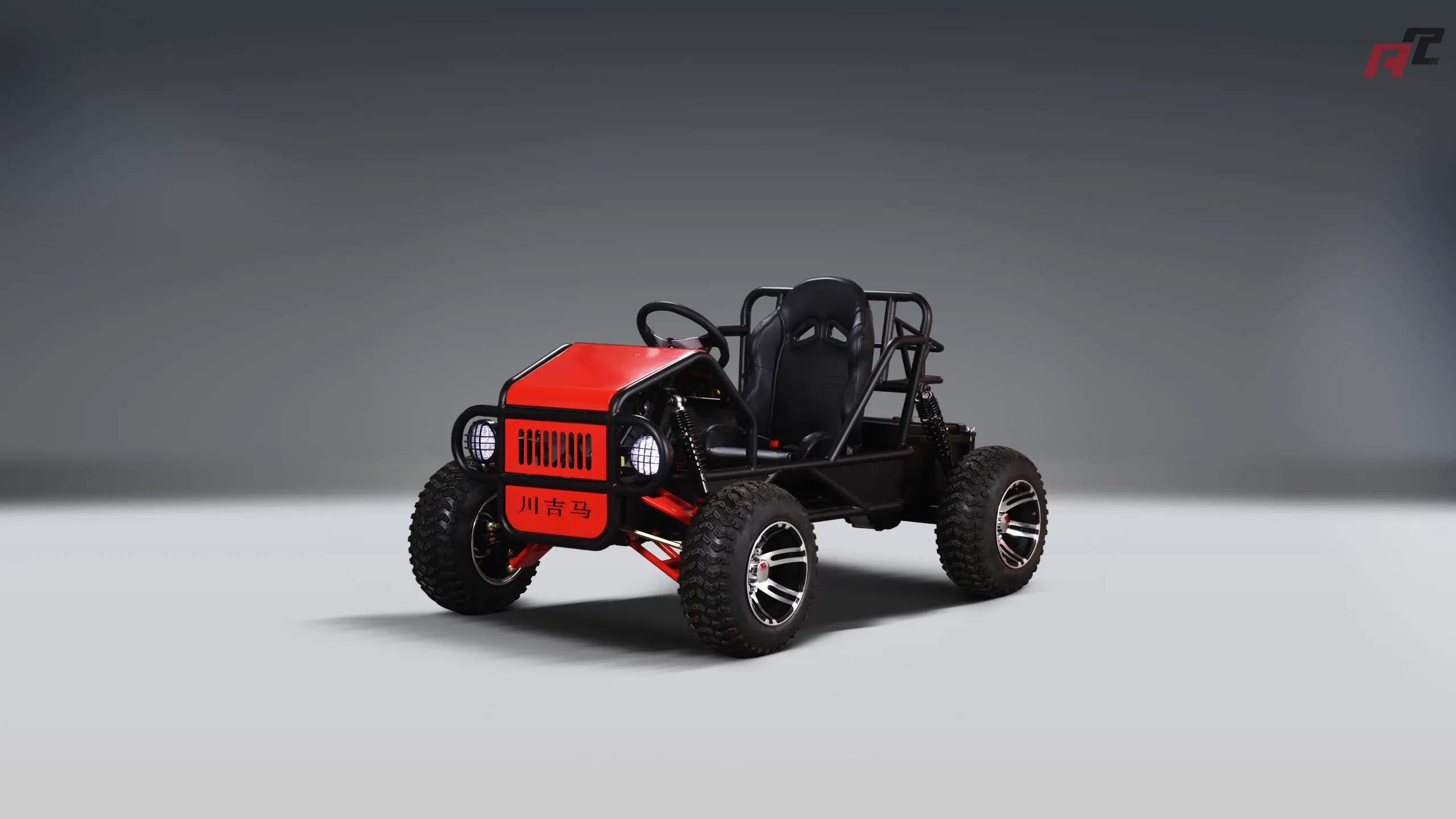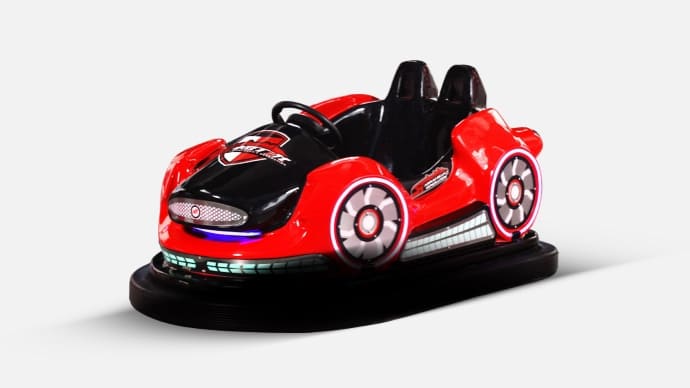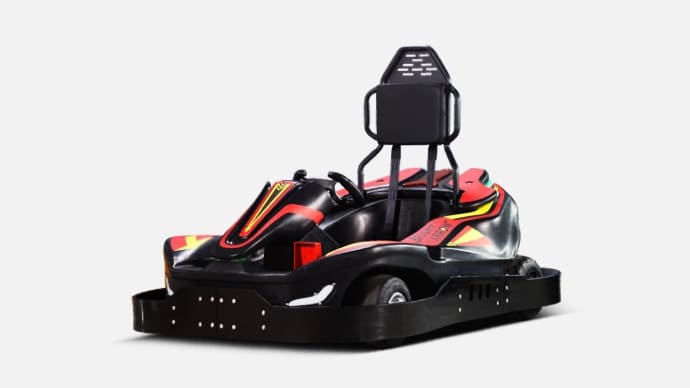Battery Bumper Car Charging: Best Practices and Setup
- Battery Bumper Car Charging: Best Practices and Setup
- Why Proper Charging Matters for Battery Bumper Car Fleets
- Common Battery Types Used in Battery Bumper Car Systems
- Choosing the Right Charger for Battery Bumper Car Systems
- Charging Rates and C‑Rates: What Operators Should Know
- Daily Charging Workflow for a Busy Venue
- Charging Area Setup and Safety for Battery Bumper Car Parks
- Maintenance Tasks That Improve Battery Life
- Troubleshooting Common Charging Issues
- When to Replace Batteries: Practical Indicators
- Cost vs. Performance: Lead‑Acid vs Lithium Comparison
- ANCHI Amusement: Expertise in Battery Bumper Car Solutions
- Practical Checklist to Implement Today
- FAQ — Battery Bumper Car Charging
- Q: How long should I charge a Battery Bumper Car?
- Q: Can I use a fast charger to get more runs per day?
- Q: Do I need a special room to charge batteries?
- Q: How often should I replace my Battery Bumper Car batteries?
- Q: Are lithium batteries worth the investment for bumper cars?
- Q: Where can I get support or custom setups for my venue?
Battery Bumper Car Charging: Best Practices and Setup
Running a reliable Battery Bumper Car operation starts with the right charging and battery management strategy. Proper charging improves runtime, extends battery life, reduces downtime, and increases guest safety. This guide provides clear, practical guidance for venue owners, operators, and maintenance teams.
Why Proper Charging Matters for Battery Bumper Car Fleets
Battery health directly affects ride uptime and safety. Poor charging practices cause reduced capacity, premature battery failure, longer downtime, and higher lifecycle costs. For example, repeatedly discharging lead‑acid batteries to deep levels can cut cycle life significantly. Following best practices reduces operational costs and keeps attractions available for guests.
Common Battery Types Used in Battery Bumper Car Systems
Understanding battery chemistry helps choose chargers and maintenance routines. The three most common types for Battery Bumper Car installations are flooded lead‑acid, sealed lead‑acid (AGM/Gel), and lithium‑ion (LiFePO4 is common for safety). Typical industry characteristics:
| Battery Type | Typical Nominal Voltage | Cycle Life (typical) | Charge Time (typical) | Pros / Cons |
|---|---|---|---|---|
| Flooded Lead‑Acid | 12V per cell, common packs 24V–48V | 300–700 cycles | 6–12 hours (slow charge) | Lower cost, heavier; needs ventilation and watering |
| AGM / Sealed Lead‑Acid | 12V per cell, packs 24V–48V | 300–800 cycles | 5–10 hours | Maintenance‑free, better vibration resistance; heavier than lithium |
| LiFePO4 (Lithium‑Ion) | 3.2V per cell, packs commonly 24V–48V | 1000–3000+ cycles | 1–4 hours (depending on charger) | Higher upfront cost, lighter, faster charging, longer life; requires BMS |
Choosing the Right Charger for Battery Bumper Car Systems
Select chargers that match battery chemistry, nominal voltage, and recommended charge profile. Key points:
- Use chargers with correct output voltage (24V, 36V, 48V as applicable) and adequate current.
- Follow recommended charge profile: lead‑acid typically requires a multi‑stage charger (bulk, absorption, float); lithium prefers CC‑CV or charger specified by OEM/BMS.
- Smart chargers with automatic stage control prevent overcharging and reduce manual monitoring.
- Include temperature compensation for lead‑acid chargers to avoid under/overcharging in extreme temps.
- Ensure chargers are certified (CE, UL, IEC when applicable) and designed for commercial use.
Charging Rates and C‑Rates: What Operators Should Know
Charging speed is often expressed in C‑rate (C). A 0.1C charge for a 100Ah battery means 10A. Practical guidelines:
- Lead‑acid: typically charged at 0.05–0.2C for routine charging to balance speed and battery life.
- Lithium (LiFePO4): can often accept 0.5–1C depending on pack and BMS — enabling much faster turnarounds.
- Avoid repeatedly using high C‑rates on batteries not rated for them — heat and stress reduce longevity.
Daily Charging Workflow for a Busy Venue
Implement a predictable daily routine to keep the fleet available and safe:
- Charge after the last session or during long non‑operational gaps — avoiding partial charges that leave batteries at low SOC for extended periods.
- Rotate vehicles so no single pack is consistently deeply cycled.
- Use a charging log or charging management system to track cycles, charge times, and issues.
- For lithium batteries, top up during short breaks if the BMS and charger support it to keep SOC in an optimal range.
Charging Area Setup and Safety for Battery Bumper Car Parks
Safe, well‑organized charging areas protect staff and guests and extend battery life:
- Designate a ventilated charging room for lead‑acid flooded batteries; sealed and lithium batteries require less ventilation but still benefit from controlled areas.
- Provide clear signage, restricted access, and training for staff handling batteries and chargers.
- Install fire suppression suitable for electrical fires and keep extinguishers rated for electrical use nearby.
- Use insulated tools, clearly labeled cables, and color‑coded connectors to avoid cross‑connection errors.
- Maintain proper spacing between chargers and vehicle bays to prevent tripping and overheating.
Maintenance Tasks That Improve Battery Life
Routine maintenance keeps fleets reliable:
- Inspect battery terminals and cable connections daily for corrosion and tightness; clean and apply terminal protectant.
- For flooded batteries, check electrolyte levels and top with distilled water as needed (do not overfill).
- Perform periodic equalization charging for flooded lead‑acid cells per manufacturer guidelines to balance cells.
- Monitor state of charge (SOC) and battery internal resistance; rising internal resistance often signals degradation.
- Record cycle counts — replace batteries proactively before capacity drops to levels that impact guest experience.
Troubleshooting Common Charging Issues
Quick checks for common problems:
- No charge: verify AC mains, charger fuse, output voltage, and connector continuity.
- Slow charge: check battery temperature, charger current limit, and battery internal resistance.
- BMS trip on lithium packs: inspect for overcurrent, short circuits, or cell imbalance; reset per vendor instructions.
- Reduced runtime: run capacity tests — consider equalization (lead‑acid) or cell balancing (lithium) and plan replacements.
When to Replace Batteries: Practical Indicators
Replace batteries when any of the following occur consistently:
- Post‑charge capacity drops below 70–80% of original rated capacity.
- Internal resistance rises significantly, causing voltage sag under load.
- Repeated failures or safety alerts from the BMS.
- Visible damage, swelling, or leakage (stop use immediately and follow disposal rules).
Cost vs. Performance: Lead‑Acid vs Lithium Comparison
Choosing between lead‑acid and lithium depends on budget, turnaround needs, and total cost of ownership. The table below summarizes core differences relevant to Battery Bumper Car operators.
| Factor | Lead‑Acid (AGM/Flooded) | LiFePO4 (Lithium) |
|---|---|---|
| Upfront Cost | Lower | Higher |
| Cycle Life | 300–800 cycles | 1000–3000+ cycles |
| Charge Time | Longer (5–12 hrs) | Shorter (1–4 hrs) |
| Weight | Heavier | Lighter |
| Maintenance | Watering/equalization (flooded) | Minimal, but BMS monitoring required |
| Operational Benefits | Lower initial investment; established technology | Faster turnarounds, longer life, lower lifetime cost in many cases |
ANCHI Amusement: Expertise in Battery Bumper Car Solutions
ANCHI Amusement is one of the leading manufacturers of amusement equipment in China. We integrate bumper cars, go‑karts, off‑road vehicles, R&D, production, sales, and after‑sales service. With over 5,000 m² of production space, multiple assembly lines, and a team of 30+ skilled technicians, ANCHI offers a wide range of electric amusement vehicles including inflatable, laser battle, drift, adult and children’s karts, and children’s off‑road vehicles. We also provide full venue design services from concept to execution to help you create branded, profitable attractions. For details, visit https://www.anchiamusement.com/.
Practical Checklist to Implement Today
Use this short checklist to improve charging operations immediately:
- Label chargers and batteries by voltage and chemistry.
- Install a dedicated, ventilated charging area with restricted access.
- Switch to smart chargers matched to battery type and include temperature compensation for lead‑acid packs.
- Log charge cycles and runtimes; schedule replacements proactively.
- Train staff on safe handling, emergency procedures, and daily inspections.
FAQ — Battery Bumper Car Charging
Q: How long should I charge a Battery Bumper Car?
A: Charge duration depends on battery chemistry and charger capacity. Typical lead‑acid packs need 5–12 hours with standard chargers, while LiFePO4 packs can often be ready in 1–4 hours with an appropriate charger. Always follow the battery manufacturer's recommended charging profile.
Q: Can I use a fast charger to get more runs per day?
A: Only use fast charging if the battery pack and BMS are rated for higher C‑rates. Fast charging can increase temperature and stress on batteries not designed for it, shortening life. For fleets needing fast turnarounds, LiFePO4 systems are a better option.
Q: Do I need a special room to charge batteries?
A: For flooded lead‑acid batteries, yes — ventilated space to disperse hydrogen gas is required. Sealed lead‑acid and lithium packs are safer but should still be charged in a controlled, monitored area with restricted access and appropriate fire safety measures.
Q: How often should I replace my Battery Bumper Car batteries?
A: Replace when capacity consistently drops below ~70–80% of original, or when internal resistance increases leading to poor performance. Typical replacement windows: lead‑acid 2–4 years depending on use; LiFePO4 5–8 years or longer depending on cycles and care.
Q: Are lithium batteries worth the investment for bumper cars?
A: Lithium batteries have higher upfront cost but often lower total cost of ownership due to longer cycle life, faster charging, lighter weight, and lower maintenance. For high‑usage venues seeking fast turnarounds, lithium is frequently the better long‑term choice.
Q: Where can I get support or custom setups for my venue?
A: ANCHI Amusement provides custom electric amusement vehicle manufacturing and full venue design services, plus after‑sales support. Contact ANCHI via https://www.anchiamusement.com/ for tailored charging and battery setup solutions.
OEM/ODM small electric go kart Manufacturers and supplier in China
Wholesale paw patrol bumper car manufacturer and supplier
OEM/ODM actev electric go kart Manufacturers and supplier in China
Wholesale best go kart tracks manufacturer and supplier in China
After Sales Support
What are the working hours of your after-sales support team?
Our after-sales support team will respond to your inquiries and questions as soon as possible within working days to ensure that you can receive satisfactory solutions and support in a timely manner.
About Logistics
How long does logistics delivery take?
Shipping times depend on your location and the shipping method you choose. Generally speaking, international shipping can take anywhere from a few weeks to a few months.
Does your product support global logistics and distribution?
Yes, our products support global logistics and distribution services, and you can receive our products anytime and anywhere.
About Product Choice
How do I determine which product is right for me?
You can choose the product type and specifications that suit you based on your needs, budget, and expected results.
Can free samples be provided?
Sorry, we can’t provide some free samples for you to test and evaluate, please contact our sales team for specific details.

Cyclone RS 2025 1200W Electric Go-kart for Home Entertainment Centers
The Cyclone RS 2025 is a high-performance electric ride-on car designed for thrill-seekers, entertainment centers, and commercial amusement businesses. Built with a durable ABS body and reinforced metal chassis, it combines strength, safety, and speed for a superior driving experience. With a 1200W mid-mounted motor (peaking at 3600W), advanced control system, and long-lasting 72V20AH LiFePO₄ battery, this ride ensures both powerful performance and reliability.
Whether for amusement parks, game zones, rental businesses, or personal recreational use, the Cyclone RS 2025 delivers unmatched excitement and durability.

Kids Electric Off Roads One-seater ATV
Discover adventure with the ANCHI Kids Electric One-seater ATV, the perfect electric off-road experience for young explorers. Designed for safety and performance, this electric off-road go kart for kids offers unmatched thrills on any terrain. Its durable build and easy-to-use controls ensure a fun and safe ride. Ideal for budding adventurers, this ATV promises endless excitement. Explore the world with confidence with ANCHI’s innovative electric off-road solutions for kids.

Battery Drift Bumper Car With inflatable tyre
The Battery Drift Bumper Car with Inflatable Tire with 650W steel gear motor, and high quality battery wich can becharged outside the car, the bumper car is ideal for amusement parks, family entertainment centers, build quality for safe, long-lasting fun.

Spaceship Laser Battle Bumper Car
Discover the future of fun with the ANCHI Spaceship Laser Battle Bumper Car! Designed for thrill-seekers, this kids bumper car offers an exhilarating laser battle experience. Parents and children alike will enjoy hours of safe, exciting play. Ideal for parties or everyday fun, it combines durability with innovative technology.










